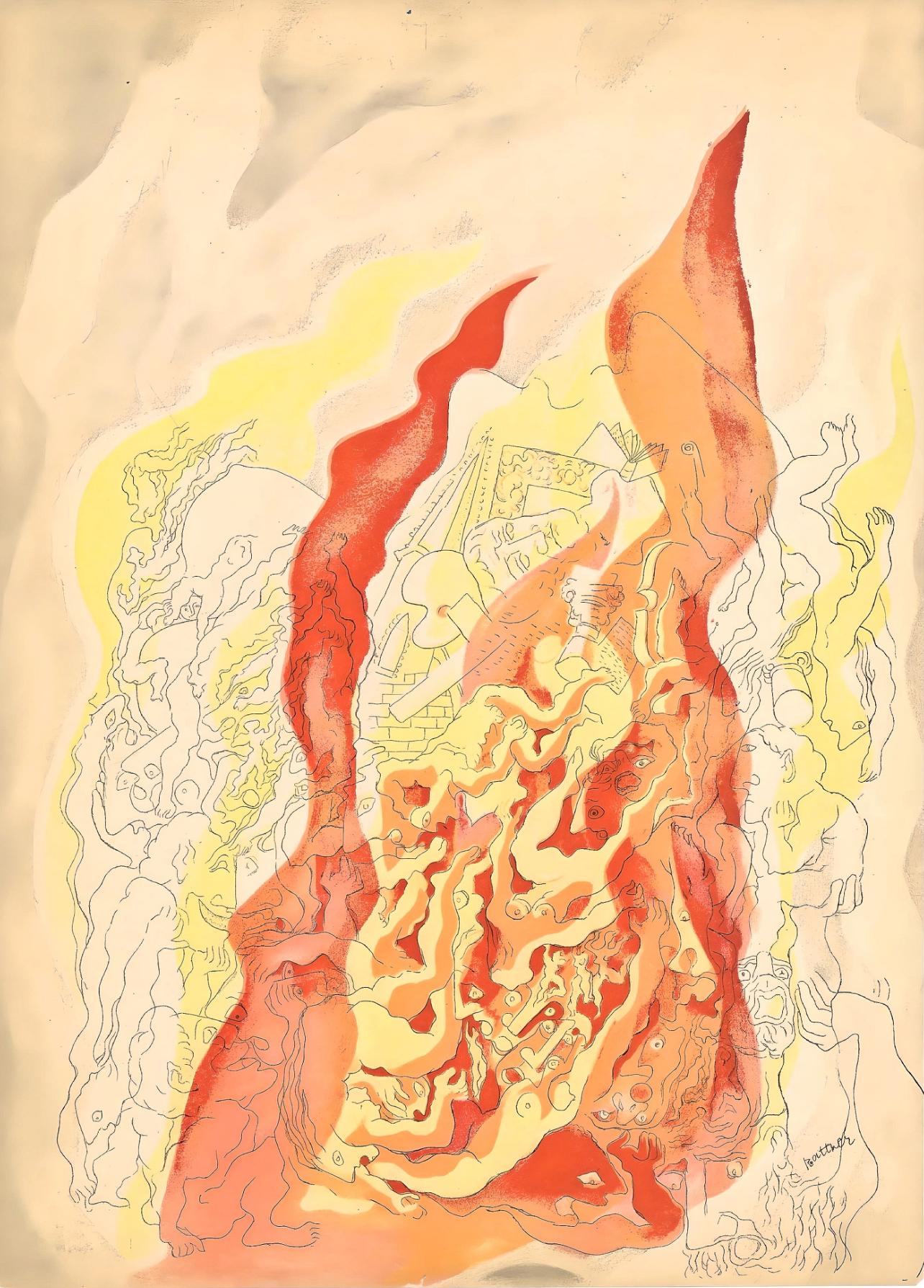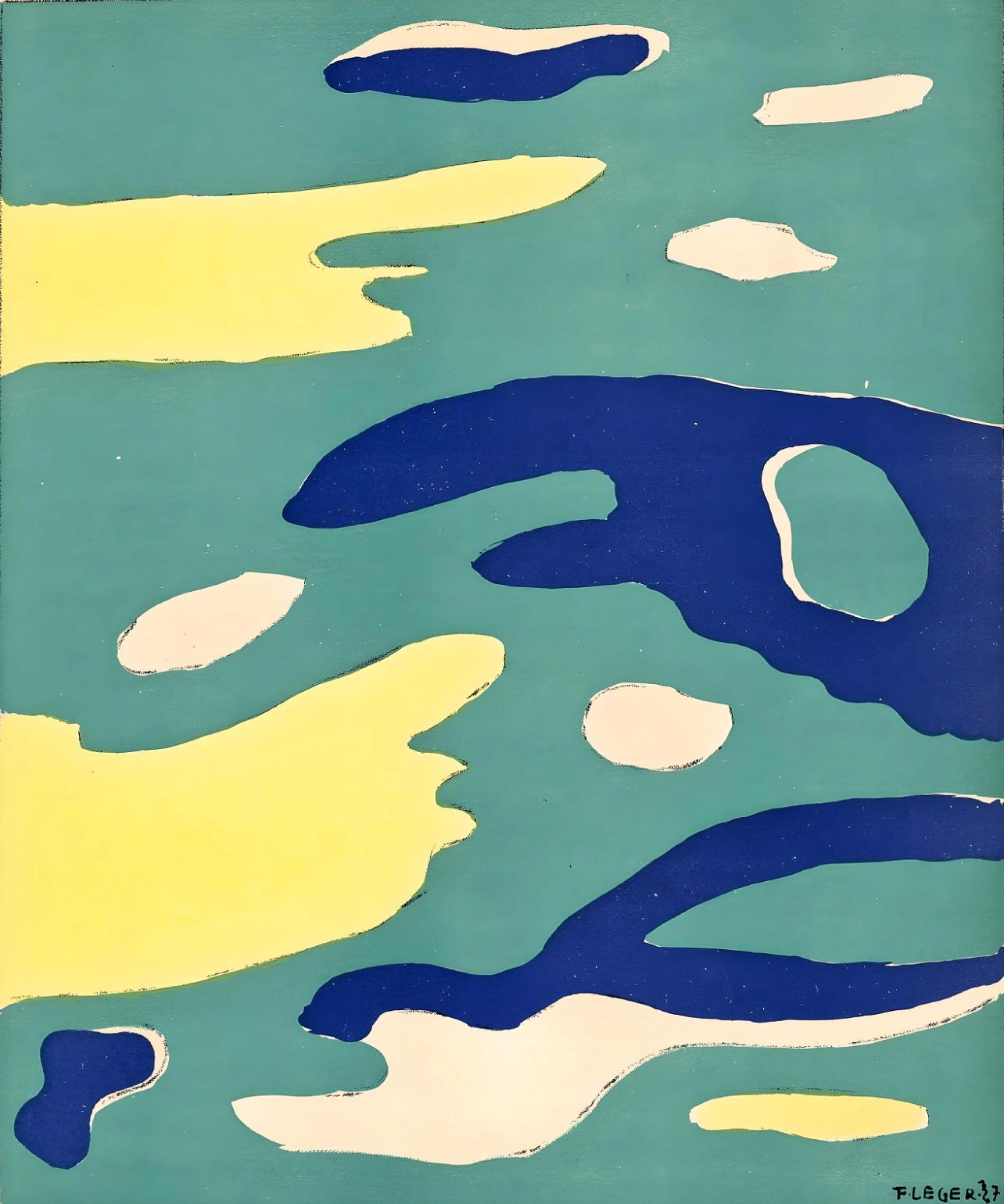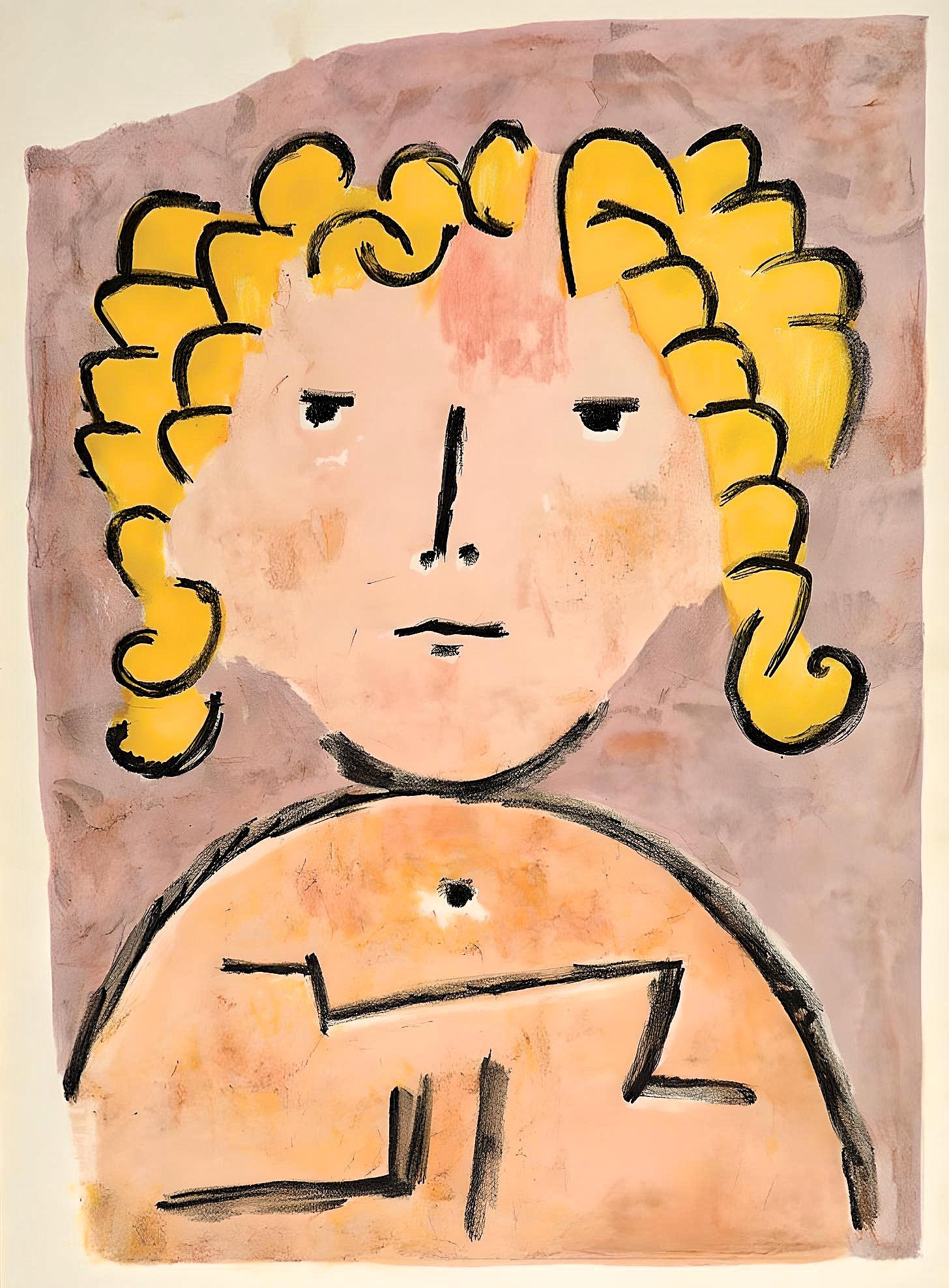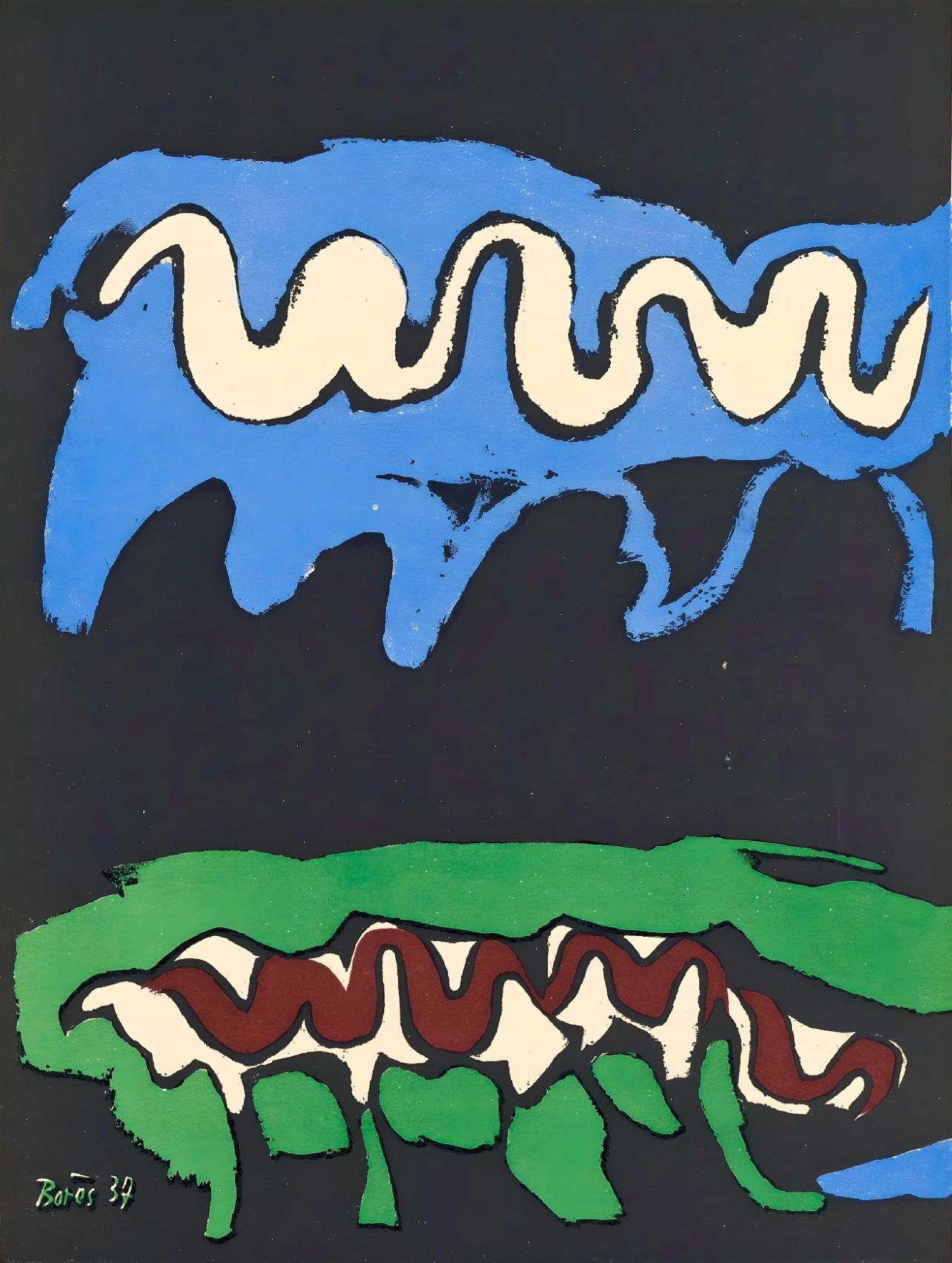Items Similar to Giacometti, Composition, Derrière le miroir (after)
Want more images or videos?
Request additional images or videos from the seller
1 of 8
Giacometti, Composition, Derrière le miroir (after)1961
1961
About the Item
Lithograph on wove paper. Inscription: Unsigned and unnumbered. Good condition. Notes: From Derrière le miroir, N° 127, published by Aimé Maeght, Éditeur, Paris; printed by Éditions Pierre à Feu, Galerie Maeght, Paris, May 1961. Excerpted from a Christie’s, New York lot essay, The life span of Derrière le Miroir was thirty-five years. Publication began in 1946. Aimé Maeght, initiator of Derrière le Miroir, had already made few attempts to start publications illustrated with fine printed lithographs in colours in the years prior to the launch of Derrière le Miroir. The name, Derrière le Miroir was suggested by Jacques Kober, manager of Galerie Maeght. The gallery had opened in 1945; the first number of Derrière le Miroir was released a year later. For this first issue Geer van Velde was invited to create lithographs to illustrate the publication. The lithographs in the first issue was printed by Mourlot, Paris. The first three issues of Derrière le Miroir were unsuccessful for Maeght as far as the edition size—the initial print-runs were far too large. From 30,000 for the first issue, the number was taken down to 10,000 for numbers two and three, until Derrière le Miroir number four was published in an edition of 1500. Maeght instituted a policy whereby unsold issues were recycled and used for the fabrication of new paper for the coming editions—this served to both conserve resources and also usually result in ultimate edition sizes far less than 1,500. With number four, the permanent format for Derrière le Miroir was established. Lithographs in colours were key; text was limited to comments on the featuring artist's exhibition taking place in the Galerie Maeght, and this catalogue format was defining to Derrière le Miroir. Galerie Maeght took on the leading role in Paris and presented all main artists including Braque, Matisse, Chagall, Léger, Bonnard, Chillida and many more. So too did Derrière le Miroir. The idea of a magazine was meanwhile still on the mind of Aimé Maeght. He found an insert as a solution. Two, and later four, pages of art review were inserted from 1952 onwards. In 1968 this find had ripened to independency and the dream of Aimé Maeght was now a tangible fact named l'Art vivant. Derrière le Miroir was on it's own again. Over 250 issues in a row. At that point publisher Aimé Maeght wished to make a mark with the publication of an hommage to all who once contributed to the magazine which came in the form of issue number 250, but was delayed by the death of Aimé Maeght. It was published after number 253 in 1982 and became a tribute to Aimé and Marguérite Maeght and 35 years of friendship with artists and poets. The era of Derrière le Miroir was closed with that final publication.
ALBERTO GIACOMETTI (1901-1966) was a Swiss sculptor, painter, draftsman and printmaker. Beginning in 1922, he lived and worked mainly in Paris but regularly visited his hometown Borgonovo to see his family and work on his art. In 1922, he moved to Paris to study under the sculptor Antoine Bourdelle, an associate of Rodin. It was there that Giacometti experimented with Cubism and Surrealism and came to be regarded as one of the leading Surrealist sculptors. Among his associates were Miró, Max Ernst, Picasso, Bror Hjorth, and Balthus.
- Creation Year:1961
- Dimensions:Height: 15 in (38.1 cm)Width: 11 in (27.94 cm)
- Medium:
- Movement & Style:
- After:Alberto Giacometti (1901 - 1966, Swiss)
- Period:
- Condition:
- Gallery Location:Auburn Hills, MI
- Reference Number:1stDibs: LU1465214327222
About the Seller
4.9
Gold Seller
These expertly vetted sellers are highly rated and consistently exceed customer expectations.
Established in 2002
1stDibs seller since 2021
858 sales on 1stDibs
Typical response time: <1 hour
- ShippingRetrieving quote...Ships From: Clinton Township, MI
- Return PolicyA return for this item may be initiated within 1 day of delivery.
Auctions on 1stDibs
Our timed auctions are an opportunity to bid on extraordinary design. We do not charge a Buyer's Premium and shipping is facilitated by 1stDibs and/or the seller. Plus, all auction purchases are covered by our comprehensive Buyer Protection. Learn More
More From This SellerView All
- Léger, L'Eau, Verve: Revue Artistique et Littéraire (after)By Fernand LégerLocated in Auburn Hills, MILithograph on vélin du Marais paper. Inscription: Signed in the plate. Good condition. Notes: From the volume, Verve: Revue Artistique et Littéraire, Vol. I, N° 1, December 1937. Pri...Category
1930s Modern Landscape Prints
MaterialsLithograph
- Léger, La partie de campagne (Saphire E.14), Verve: Revue Artistique (after)By Fernand LégerLocated in Auburn Hills, MILithograph on vélin du Marais paper. Inscription: Signed in the plate. Good condition; with centerfold, as issued. Notes: From the volume, Verve: Revue Artistique et Littéraire, Vol....Category
1950s Modern Landscape Prints
MaterialsLithograph
- Klee, Tête d'enfant, Verve: Revue Artistique et Littéraire (after)By Paul KleeLocated in Auburn Hills, MILithograph on vélin du Marais paper. Inscription: Unsigned and unnumbered, with additional lithography after Henri Matisse on verso, as issued. Good condition. Notes: From the volume...Category
1930s Modern Landscape Prints
MaterialsLithograph
- Chagall, Printemps, Verve: Revue Artistique et Littéraire (after)By Marc ChagallLocated in Auburn Hills, MILithograph on vélin du Marais paper. Inscription: Signed in the plate, verso, with title and additional lithograph. Good condition. Notes: From the volume, Verve: Revue Artistique et...Category
1930s Modern Landscape Prints
MaterialsLithograph
- Borès, La terre, Verve: Revue Artistique et Littéraire (after)By Francisco BoresLocated in Auburn Hills, MILithograph on vélin du Marais paper. Inscription: Signed in the plate. Good condition. Notes: From the volume, Verve: Revue Artistique et Littéraire, Vol. I, N° 1, December 1937. Printed by Mourlot Freres, Paris, 1937. FRANCISCO BORES (1898-1972) was an important figure of twentieth-century European art. His presence was important among the second wave of Spanish artists who arrived in Paris in the 1920s, which also included Pablo Picasso, Ginés Parra, Pedro Flores...Category
1930s Modern Landscape Prints
MaterialsLithograph
- Rattner, L'Feu, Verve: Revue Artistique et Littéraire (after)By Abraham RattnerLocated in Auburn Hills, MILithograph on vélin du Marais paper. Inscription: Signed in the plate. Good condition. Notes: From the volume, Verve: Revue Artistique et Littéraire, Vol. I, N° 1, December 1937. Pri...Category
1930s Modern Landscape Prints
MaterialsLithograph
You May Also Like
- Jacques Villon - Dance of the Universe - Original LithographBy Jacques VillonLocated in Collonge Bellerive, Geneve, CHJacques Villon - Dance of the Universe - Original Lithograph From the literary review "XXe Siècle" 1959 Dimensions: 32 x 24 cm Publisher: G. di San Lazzaro. Jacques Villon (1875 -...Category
1950s Modern Abstract Prints
MaterialsLithograph
- (after) Antoine Pevsner - Face of a Man - LithographLocated in Collonge Bellerive, Geneve, CH(after) Antoine Pevsner - Face of a Man - Lithograph From the literary review "XXe Siècle" 1959 Signed in the plate Dimensions: 32 x 24 cm Publisher: ...Category
1950s Modern Abstract Prints
MaterialsLithograph
- The Hanging Gardens of Babylon, Eggenberger 1970.8 signed/n lithograph Swiss ArtLocated in New York, NYFranz Eggenschwiler The Hanging Gardens of Babylon (Eggenberger 1970.8), 1970 Lithograph with Embossing Hand signed and numbered 26/200 on the lower front 19 3/4 × 25 3/4 inches Unfr...Category
1970s Modern Landscape Prints
MaterialsLithograph, Pencil
- Glowing CityBy Richard FlorsheimLocated in New York, NYRichard Florsheim created this color lithograph entitled “Glowing City” in 1969 in an edition of 250 pieces. Published by Associated American Artists and printed by Mourlot Press, Pa...Category
1960s American Modern Landscape Prints
MaterialsLithograph
- 'Winter Silhouettes, ' offset lithograph by Schomer LichtnerBy Schomer LichtnerLocated in Milwaukee, WI'Winter Silhouettes,' a small and delicate print, is an original offset lithograph by the Milwaukee artist Schomer Lichtner. The composition displays registers of foliage, emerging from the white of the paper as though emerging from the snow-covered ground. The artwork is thus plays with the materials of printmaking; the paper is both the support and the primary indication of the season. The subtle texture of the tooth of the paper also adds life to the image, giving the snow a wind-swept, creature trodden surface. The free forms of the grasses and leaves resemble the lyrical mid-century works of the French artist Henri Matisse, which combined with these material concerns demonstrate Lichter's modern sensibilities. 3.75 x 2.75 inches, image 5.5 x 4.5 inches, paper 9.25 x 7.75 inches frame Signed and dated in the stone, lower right Framed to conservation standards using 100 percent rag matting, museum glass, and housed in a modern silver moulding Milwaukee artist Schomer Lichtner was well known for his whimsical cows and ballerinas and abstract imagery. He and his late wife Ruth Grotenrath, both well-known Wisconsin artists, began their prolific careers as muralists for WPA projects, primarily post offices. Lichtner also painted murals for industry and private clients. Schomer was a printmaker and produced block prints, lithographs, and serigraph prints. His casein (paint made from dairy products) and acrylic paintings are of the rural Wisconsin landscape and farm animals. He became interested in cows when he and Ruth spent summers near Holy Hill in Washington County. According to David Gordon, director of the Milwaukee Art Museum, Schomer Lichtner had a tremendous joie de vivre and expressed it in his art. Schomer Lichtner was nationally known for his whimsical paintings and sculptures of black- and white-patterned Holstein cows and elegant ballerina dancers. Lichtner also painted all sorts of combinations of beautiful women, flowers and country landscapes. James Auer, former Milwaukee Journal Sentinel art critic, said that his art eventually "exploded into expressionistic design elements with bold, flat areas of color and high energy that anticipated Pop Art." Auer went on to describe Lichtner’s work as full of "wit, vigor and virtuosity." As early as 1930, Lichtner’s work was shown at the prestigious Carnegie International Exhibition in New York and at museums throughout the Midwest. As a student, he was a protégé of another icon of 20th century American art, Gustave Moeller. Lichtner and his wife, Ruth Grotenrath (1912-1988), are celebrated as Milwaukee’s first couple of painting and are regarded as major Wisconsin artists. Lichtner’s impressive production, perseverance, longevity, and positive approach to his life and art made him and his work distinctive and much loved by his many admirers. His work is currently represented in collections at the Milwaukee Art Museum, the John Michael Kohler Art Center, the West Bend Museum, and in the collections of many individuals. Books on the lives and art work of both Lichtner and Grotenrath are in progress and it is anticipated that they will be published next year. Schomer Lichtner passed away on May 9, 2006 at the age of 101. He continued to amaze and create with his whimsical paintings of ballerinas and cows. The late James Auer, art critic for the Milwaukee Journal Sentinel referred to Lichtner as the artist laureate of Milwaukee, Wisconsin. He was the official artist of the Milwaukee Ballet...Category
1960s American Modern Landscape Prints
MaterialsBlack and White, Lithograph
- 'Winter Silhouettes, ' offset lithograph by Schomer LichtnerBy Schomer LichtnerLocated in Milwaukee, WI'Winter Silhouettes,' a small and delicate print, is an original offset lithograph by the Milwaukee artist Schomer Lichtner. The composition displays registers of foliage, emerging from the white of the paper as though emerging from the snow-covered ground. The artwork is thus plays with the materials of printmaking; the paper is both the support and the primary indication of the season. The subtle texture of the tooth of the paper also adds life to the image, giving the snow a wind-swept, creature trodden surface. The free forms of the grasses and leaves resemble the lyrical mid-century works of the French artist Henri Matisse, which combined with these material concerns demonstrate Lichter's modern sensibilities. 3.75 x 2.75 inches, image 5.5 x 4.5 inches, paper 10 x 8 inches frame Signed and dated in the stone, lower right Framed to conservation standards in a shadow-box style mounting, using 100 percent rag matting, museum glass, and housed in a cherry wood moulding Overall excellent condition; some toning to edges of paper; some minor abrasions to frame Milwaukee artist Schomer Lichtner was well known for his whimsical cows and ballerinas and abstract imagery. He and his late wife Ruth Grotenrath, both well-known Wisconsin artists, began their prolific careers as muralists for WPA projects, primarily post offices. Lichtner also painted murals for industry and private clients. Schomer was a printmaker and produced block prints, lithographs, and serigraph prints. His casein (paint made from dairy products) and acrylic paintings are of the rural Wisconsin landscape and farm animals. He became interested in cows when he and Ruth spent summers near Holy Hill in Washington County. According to David Gordon, director of the Milwaukee Art Museum, Schomer Lichtner had a tremendous joie de vivre and expressed it in his art. Schomer Lichtner was nationally known for his whimsical paintings and sculptures of black- and white-patterned Holstein cows and elegant ballerina dancers. Lichtner also painted all sorts of combinations of beautiful women, flowers and country landscapes. James Auer, former Milwaukee Journal Sentinel art critic, said that his art eventually "exploded into expressionistic design elements with bold, flat areas of color and high energy that anticipated Pop Art." Auer went on to describe Lichtner’s work as full of "wit, vigor and virtuosity." As early as 1930, Lichtner’s work was shown at the prestigious Carnegie International Exhibition in New York and at museums throughout the Midwest. As a student, he was a protégé of another icon of 20th century American art, Gustave Moeller. Lichtner and his wife, Ruth Grotenrath (1912-1988), are celebrated as Milwaukee’s first couple of painting and are regarded as major Wisconsin artists. Lichtner’s impressive production, perseverance, longevity, and positive approach to his life and art made him and his work distinctive and much loved by his many admirers. His work is currently represented in collections at the Milwaukee Art Museum, the John Michael Kohler Art Center, the West Bend Museum, and in the collections of many individuals. Books on the lives and art work of both Lichtner and Grotenrath are in progress and it is anticipated that they will be published next year. Schomer Lichtner passed away on May 9, 2006 at the age of 101. He continued to amaze and create with his whimsical paintings of ballerinas...Category
1960s American Modern Landscape Prints
MaterialsBlack and White, Lithograph





